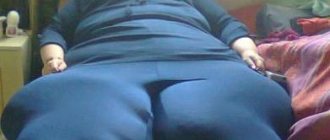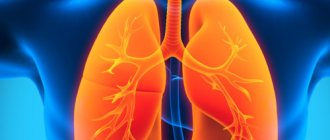Cholestasis or cholestatic syndrome is a pathology associated with stagnation of bile and a decrease in its secretion into the duodenum. The term comes from the ancient Greek words χολή - bile and στάσις - standing, stagnation. Ancient aesculapians paid a lot of attention to liver diseases, considering this organ more important than the heart. You can recall the myth of Prometheus, whose liver was pecked out by an eagle that flew in every day - this was the most terrible punishment for the immortal hero. Most of the knowledge about the symptoms of cholestasis has come to modern medicine since ancient times.
Cholestasis - symptoms and treatment of liver congestion
Cholestasis is a disease characterized by a decrease in the flow of bile into the duodenum due to a violation of its excretion, formation or elimination. Cholestasis, the symptoms of which manifest themselves primarily in skin itching, dark urine and light feces, depending on the etiology, can be extrahepatic or intrahepatic, depending on the nature of the course - acute or chronic, with or without jaundice.
general description
Cholestasis is also commonly defined as “cholestasis syndrome.” Morphologists define the name of this disease as the presence of bile in hepatocytes and hypertrophied Cooper cells (cellular bilirubinostasis), which in particular manifests itself in the form of small drops of bile concentrated in the area of dilated canals (canalicular bilirubinostasis).
In the case of extrahepatic cholestasis, the location of bile is concentrated in the area of interlobular dilated bile ducts (which determines ductular cholestasis), as well as in the liver parenchyma, where bile has the appearance of so-called “bile lakes”.
Cholestasis that persists for several days provokes the occurrence of potentially reversible ultrastructural changes. The advanced phase of the disease is characterized by a number of histological changes in the form of dilation of bile capillaries, formation of bile blood clots, disappearance of villi from the canalicular membrane, and damage to cell membranes, which in turn provokes their permeability.
In addition, among the changes in the extended phase, there is a violation of the integrity of tight junctions and bilirubinostasis, the formation of hepatic rosettes and periductal edema, sclerosis and biliary infarctions. In this case, microabscesses, mesenchymal and periportal inflammation, etc. are also formed.
With a persistent form of cholestasis with a corresponding form of inflammation and a reaction in the connective tissue, the disease becomes irreversible. After a certain time (in some cases, measured in months, in others in years), such a course of the disease leads to the development of biliary fibrosis and primary/secondary biliary cirrhosis.
It should be noted that any pathology associated with the liver can occur in combination with cholestasis. In some cases, the causes of liver damage have been identified (alcohol, viruses, drugs), in some cases they have not been identified (primary biliary cirrhosis, sclerosing primary cholangitis). A number of diseases (histiocytosis X, sclerosing cholangitis) lead to damage to both the intrahepatic ducts and the extrahepatic ducts.
Indestructible cholecystitis. How to break the vicious circle?
Chronic cholecystitis is one of the most common and complex diseases that require long-term conservative or urgent surgical treatment. Despite the development of medicine, the number of patients with cholecystitis is growing from year to year. At the same time, the frequency of operations and... the number of complications leading to disability are increasing. How to break the circle?
Exacerbation of chronic cholecystitis is often associated with poor diet, consumption of fatty, spicy foods and alcohol. How does chronic cholecystitis manifest? What should you do if it worsens and should you always consult a doctor?
Main forms of the disease
Cholestasis can manifest itself as an intrahepatic or extrahepatic form. Intrahepatic cholestasis, the symptoms of which arise depending on its own forms of separation, determines the following types:
- Functional cholestasis. It is characterized by a decrease in the level of bile canalicular flow, as well as a decrease in organic anions (in the form of bile acids and bilirubin) and hepatic excretion of water.
- Morphological cholestasis. It is characterized by the accumulation of bile components in the bile ducts and hepatocytes.
- Clinical cholestasis. Determines the retention in the blood of components that are normally excreted into bile.
As for extrahepatic cholestasis, it develops during extrahepatic obstruction in the bile ducts.
Returning to intrahepatic cholestasis, we note that it occurs as a result of the absence of obstruction in the main bile ducts, while its development can occur both at the level of the intrahepatic bile ducts and at the level of hepatocytes. Based on this, cholestasis is distinguished, which is caused by damage to hepatocytes, ductules and canaliculi, as well as mixed cholestasis. In addition, acute cholestasis and chronic cholestasis, in its icteric or anicteric form, are also determined.
Diagnostics
1. Primary medical appointment
- collecting a detailed life history (past infections, liver diseases, tendency to excessive alcohol consumption, etc.);
- clarification of subjective complaints presented by the patient (see list of symptoms);
- comprehensive physical examination: assessment of the condition of the skin, percussion and palpation of the abdomen, measurement of height and weight.
2. Laboratory tests
- blood (general). With cholesterol, there is a decrease in the level of hemoglobin and red blood cells, as well as an increase in the concentration of leukocytes (in children, these indicators may be normal);
- blood (biochemical). Possible signs of the syndrome are increased lipid levels, increased bilirubin concentrations and changes in the lipid spectrum. It is also very likely that there is an imbalance in the enzyme balance (the ratio of alkaline phosphatase, 5-nucleotidase, leucine aminopeptidase and glutamyl transpeptidase);
- urine (detection of bile pigments).
3. Instrumental studies
- An abdominal ultrasound will reveal pathological changes in the gallbladder and an increase in the size of the liver;
- ERP (endoscopic retrograde cholangiopancreatography) will provide comprehensive information about the condition of the bile ducts;
- liver biopsy;
- MRC (magnetic resonance cholangiography);
- PCH (percutaneous transhepatic cholangiography);
- CT and MRI for final confirmation of the diagnosis.
Causes of cholestasis
The causes of the disease we are considering are extremely diverse. An important role when considering the development of cholestasis is determined for bile acids, which are characterized by surface-active features in the extreme severity of their manifestations. It is bile acids that provoke cellular damage to the liver while simultaneously increasing cholestasis. The toxicity of bile acids is determined based on the degree of their lipophilicity and hydrophobicity.
In general, cholestasis syndrome can occur in a variety of conditions, each of which can be classified into one of two groups of disorders:
Disorders associated with the formation of bile:
- Alcoholic liver damage;
- Viral liver damage;
- Toxic liver damage;
- Drug-induced liver damage;
- Benign form of recurrent cholestasis;
- Disturbances in intestinal microecology;
- Cirrhosis of the liver;
- Cholestasis of pregnancy;
- Bacterial infections;
- Endotoxemia.
Disorders associated with bile flow:
- Biliary primary cirrhosis;
- Caroli's disease;
- Sclerosing primary cholangitis;
- Biliary atresia;
- Tuberculosis;
- Sarcoidosis;
- Lymphogranulomatosis;
- Idiopathic ductopenia.
Canalicular and hepatocellular cholestasis can be provoked by alcohol, medication, viral or toxic liver damage, as well as endogenous disorders (cholestasis in pregnant women) and heart failure. Ductular (or extralobular) cholestasis occurs in cases of diseases such as liver cirrhosis.
The listed canalicular and hepatocellular cholestasis lead mainly to lesions of the transport membrane systems; extralobular cholestasis occurs when the epithelium of the bile ducts is damaged.
Intrahepatic cholestasis is characterized by the entry into the blood and, accordingly, also into tissues of various types of bile components (mainly bile acids). In addition, their absence or deficiency is noted in the lumen of the duodenum, as well as in other intestinal sections.
Cholestasis symptoms
Cholestasis, due to the excessive concentration of bile components in the liver, as well as in the tissues of the body, provokes the occurrence of hepatic and systemic pathological processes, which, in turn, determine the corresponding laboratory and clinical manifestations of this disease.
The basis for the formation of clinical symptoms is based on the following three factors:
- Excessive flow of bile into the blood and tissues;
- Decreased volume of bile or its complete absence in the intestines;
- The degree of exposure of bile components, as well as toxic metabolites of bile directly to the tubules and liver cells.
The general severity of symptoms characteristic of cholestasis and bile stagnation is determined by the underlying disease, as well as hepatic cell failure and impaired excretory functions of hepatocytes.
Among the leading manifestations of the disease, as we have already noted above, regardless of the form of cholestasis (acute or chronic), skin itching, as well as disturbances in digestion and absorption, are determined. For the chronic form of cholestasis, characteristic manifestations are bone lesions (in the form of hepatic osteodystrophy), cholesterol deposits (in the form of xanthomas and xanthelasmas), as well as skin pigmentation that occurs due to the accumulation of melanin.
Fatigue and weakness are not symptoms characteristic of the disease in question, in contrast to their relevance for hepatocellular damage. The liver increases in size, its edge is smooth, it is thickened and painless. In the absence of portal hypertension and biliary cirrhosis, splenomegaly (enlarged spleen), as a symptom accompanying the pathological process, is extremely rare.
In addition, symptoms include discoloration of stool. Steatorrhea (excessive excretion of fat in feces due to impaired intestinal absorption) is caused by a lack of bile salts in the intestinal lumen, which are required to ensure the absorption of fat-soluble vitamins and fats. This, in turn, corresponds to pronounced manifestations of jaundice.
The stool becomes foul-smelling, thin and bulky. The color of stool allows you to determine the dynamics in the process of biliary tract obstruction, which can be, respectively, complete, intermittent or resolving.
Short-term cholestasis leads to a deficiency of vitamin K in the body. A long-term course of this disease provokes a decrease in the level of vitamin A in the body, which manifests itself in “night blindness,” that is, in impaired adaptation to darkness of vision. In addition, there is also a deficiency of vitamins E and D. The latter, in turn, acts as one of the main links in hepatic osteodystrophy (in the form of osteoporosis or osteomalacia), manifesting itself in a fairly severe pain syndrome that occurs in the lumbar or thoracic region. Against this background, spontaneity of fractures is also noted, which occur even with minor injuries.
Changes at the level of bone tissue are also complicated by the actual disturbance that occurs in the process of calcium absorption. In addition to vitamin D deficiency, the occurrence of osteoporosis in cholestasis is determined by calcitonin, growth hormone, parathyroid hormone, sex hormones, as well as a number of external factors (malnutrition, immobility, decreased muscle mass).
Thus, due to the bile deficiency characteristic of the disease, digestion is disrupted, as is, in fact, the absorption of dietary fats. Diarrhea, which is a companion to steatorrhea, provokes the loss of fluid, fat-soluble vitamins and electrolytes. For this reason, malabsorption develops, followed by weight loss.
Xanthomas (yellow tumor-like spots on the skin that appear as a result of disturbances in the lipid metabolism of the body) act as markers of cholestasis (in particular its chronic form). Mostly the area of concentration of these spots is localized in the area around the eyes, on the chest, back, neck, as well as in the area of the palmar folds and under the mammary glands. The appearance of xanthoma is preceded by hypercholesterolemia, which can last for three or more months. It is noteworthy that xanthomas are a formation that is subject to reverse development, which in particular occurs in the case of a decrease in cholesterol levels. Another type of xanthomas are formations such as xanthelasmas (yellowish plaques concentrated in the area around the eyes and directly on the eyelids).
A characteristic manifestation of cholestasis is also a disturbance in copper metabolism, which contributes to the development of collagenogenesis processes. About 80% of the total volume of absorbed copper is normally excreted in the intestine with bile in a healthy person, after which it is removed along with feces. In the case of cholestasis, copper accumulation in the body occurs in significant concentrations (by analogy with Wilson-Konovalov disease). A number of cases indicate the detection of a pigmented corneal ring.
The accumulation of copper in liver tissue occurs in cholangiocytes, hepatocytes and in systemic cells of mononuclear phagocytes. The localization of excess copper content in cells is determined by etiological factors.
Among patients with cholestasis in its chronic form, such a manifestation as dehydration occurs; the activity of the cardiovascular system undergoes changes. Violation of vascular reactions occurs due to arterial hypotension; in addition, there is a disturbance in tissue regeneration and increased bleeding. The risk of developing sepsis increases.
The long course of cholestasis is often complicated by the formation of pigmented stones in the biliary system, which, in turn, are complicated by bacterial cholangitis. The formation of biliary cirrhosis determines the relevance of signs of hepatic cellular failure and portal hypertension.
Anorexia, fever, vomiting and abdominal pain may be symptoms of the disease that provokes cholestasis, but they are not symptoms of cholestasis itself.
Possible complications and consequences
In the absence of adequate treatment or an incorrectly formed course of therapy, the following health problems may develop:
- intoxication of the body with excessive concentration of bile in the liver tissues, which will lead to loss of appetite, constant nausea, vomiting, physical weakness and loss of strength;
- fragility of bones, nail plates and hair (occurs due to a lack of vitamins and minerals, which simply cease to be absorbed by the intestines);
- frequent internal and external bleeding;
- destruction of liver cells - hepatocytes, which ultimately leads to cirrhosis;
- the formation of stones inside the ducts, which are constantly filled with bile, since there is no stable outflow;
- malignant tumors that have formed against the background of impaired metabolism, chronic poisoning of not only liver tissue, but the entire body as a whole;
- the development of secondary diseases of the gastrointestinal tract, which suffer due to the lack of normal functioning of the digestive system, since most of the fatty acids are simply not broken down in the intestinal cavity.
All these negative complications and consequences can be easily eliminated through timely preventive measures and the organization of proper nutrition with periodic examinations by a gastroenterologist. Especially if one of your close relatives suffered from cholestasis. This dysfunction of the liver and gallbladder can be inherited along with genetic information.
Similar articles:
Diagnosis of cholestasis
Cholestasis is determined based on the patient’s medical history and the presence of characteristic symptoms along with palpation of the relevant areas. An ultrasound examination is provided as a diagnostic research algorithm, with the help of which it becomes possible to determine the mechanical blockage formed in the bile ducts. When dilatation in the ducts is detected, cholangiography is used.
If intrahepatic cholestasis is suspected, a liver biopsy can be performed, for which, however, it is necessary to completely exclude the possibility of the patient having an extrahepatic form of cholestasis. Otherwise, ignoring this factor may lead to the development of bile peritonitis.
Localization of the level of the lesion (extrahepatic or intrahepatic cholestasis) can be done using cholescentigraphy, which uses technetium-labeled iminodiacetic acid.
Treatment of cholestasis
The intrahepatic form of the disease indicates the effectiveness of etiotropic therapy. That is, this implies specific treatment aimed at eliminating the causes that caused the particular disease in question. This may involve stone removal, deworming, tumor resection, etc. Based on a number of studies, a high degree of effectiveness has been determined when using ursodeoxycholic acid in the treatment of cholestasis with actual biliary cirrhosis, as well as sclerosing primary cholangitis, alcoholic liver disease, etc.
Plasmapheresis, colestipol, cholestyramine, opioid antagonists, etc. are used to treat skin itching that occurs. In addition, a diet is recommended that excludes the consumption of neutral fat while reducing its volume to a daily value of less than 40 g. Additionally, fat-soluble vitamins are prescribed to compensate for their deficiency (K, A, E, D), as well as calcium. In the event of a mechanical obstruction in the outflow of bile, endoscopic or surgical treatment is performed.
If you suspect cholestasis with relevant symptoms, you should contact a gastroenterologist. Additionally, you may need to consult a surgeon.
If you think you have bile stasis Cholestasis
and the symptoms characteristic of this disease, then doctors can help you: gastroenterologist, surgeon.
Source Did you like the article? Share with friends on social networks:
Stagnation of bile - what to do?
This disease requires the following treatment methods:
- conservative;
- surgical intervention.
The doctor determines how to treat cholestasis individually in each specific case. Drug therapy is aimed at improving the patient's condition. In severe cases, surgical intervention is resorted to.
The operation is performed only after the patient’s condition has been stabilized using the following procedures:
- droppers with electrolyte that detoxify the body;
- antibacterial therapy;
- nasogastric tube;
- antispasmodic drugs.
Cholestasis - clinical recommendations
Treatment of this disease requires a comprehensive approach.
If bile stasis in the gallbladder is diagnosed, it is important to follow these rules:
- You should go to bed at the same time.
- Engage in moderate physical activity. For example, you can take half-hour walks every day 4-5 hours before bedtime.
- To refuse from bad habits.
- Go swimming.
Drugs for cholestasis
The treatment regimen may differ in each specific case. Most often, patients with cholestatic syndrome are prescribed ursodeoxycholic acid. This substance is present in the following drugs:
- Ursosan;
- Ursohol.
These drugs have the following spectrum of action:
- immunomodulatory;
- anticholinergic;
- choleretic;
- hepatoprotective;
- hypolipidemic.
The following therapy is often prescribed:
- If bleeding is accompanied by stagnation of bile, treatment involves the use of the drug Vikasola. It is prescribed once a day, 10 mg.
- For bone pain, calcium gluconate is prescribed. The drug at a dosage of 15 mg/kg is dissolved in 500 ml of glucose and administered dropwise. Such procedures are recommended to be carried out once a day for 7 days in a row.
- Glucocorticosteroids will help reduce inflammation. Medrol, Metypred or Solu-Medrol are often prescribed.
- Naltrexone, Sertraline and Rifampicin help eliminate skin itching.
An experienced doctor knows best how to treat bile stagnation. In most cases, hepatoprotectors are prescribed during therapy. Such drugs restore and protect liver cells. Heptral can be used for this. This drug is administered intravenously or intramuscularly. The therapeutic course lasts 2-2.5 months.
Cholestasis - treatment with folk remedies
In complex therapy, alternative methods are often used. For example, choleretic herbs can be used for bile stagnation. However, the use of such medications should be strictly under the supervision of a doctor, otherwise the situation may worsen greatly. Self-medication is dangerous! Uncontrolled use of folk remedies can cause serious harm!
Healing infusion for cholestasis
Ingredients:
- buckthorn bark – 1 part;
- dandelion rhizome – 1 part;
- peppermint leaves – 1 part;
- steelhead roots – 1 part;
- boiling water – 200 ml.
Preparation
- Take 1 tablespoon of raw material and pour boiling water over it.
- Leave for an hour and filter.
- Such choleretic herbs for stagnation of bile are taken twice a day (morning and evening). A single dosage is a glass of the drug.
Diet for cholestasis
A properly selected diet will help alleviate the condition. Meals should be fractional: small portions 6-7 times a day.
What choleretic products are allowed for consumption during bile stagnation:
- baked or boiled vegetables;
- fruit drinks;
- compotes;
- lean boiled or steamed fish;
- pasta from durum wheat;
- porridge (buckwheat, rice, millet);
- low-fat fermented milk products;
- boiled veal, turkey or beef;
- honey;
- eggs.
A diet for bile stagnation involves excluding the following products from the menu:
- radishes;
- rich soups;
- lard;
- whole milk;
- coffee;
- ice cream;
- smoked meats;
- sauces;
- alcohol;
- fried foods;
- smoked meats;
- spicy dishes;
- caviar;
- sweets with cream.
Exercises for cholestasis
Gymnastics should be performed in the morning on an empty stomach. The first classes should be conducted under the supervision of an experienced instructor, and after that the patient can carry out the procedures at home. Exercises for bile stagnation can be as follows:
- “Basket”
- lying on your back, you need to raise your arms and legs and hold them in this position for some time. In this case, breathing should be even. - Walking with your knees raised high.
You need to move on your toes, and then on your heels. - “Cat”
- sitting on all fours, you first need to bend your back and then pull it up.










